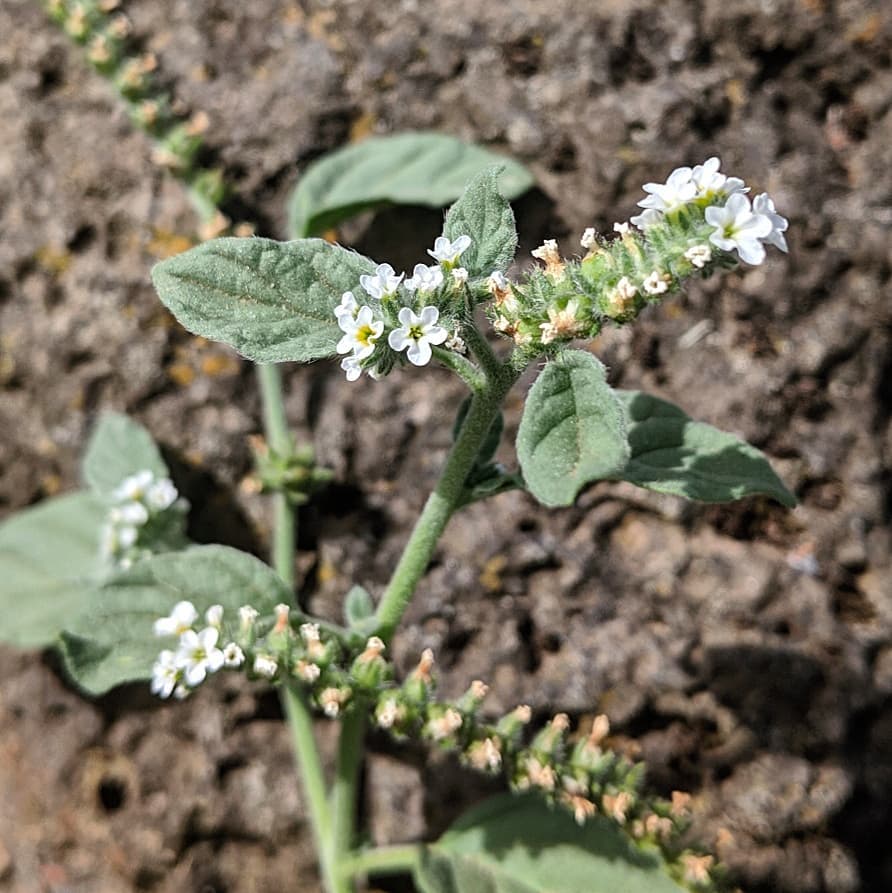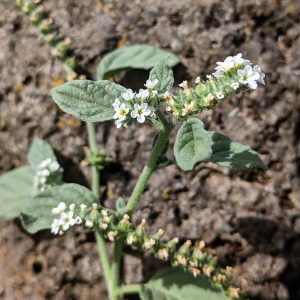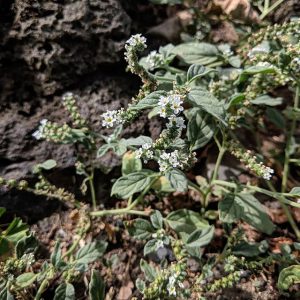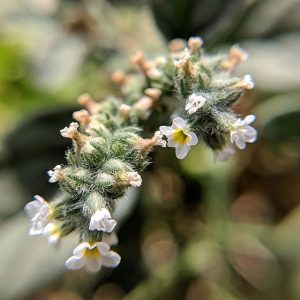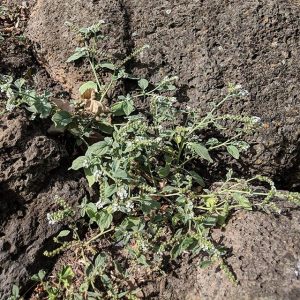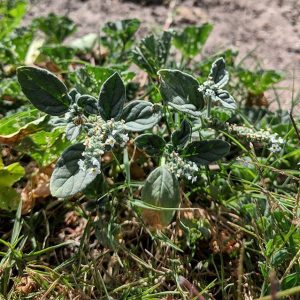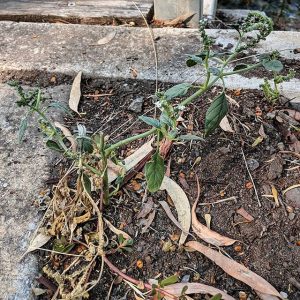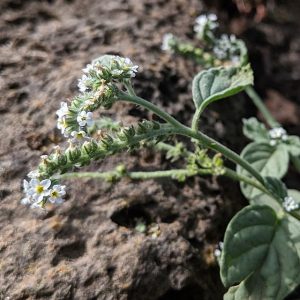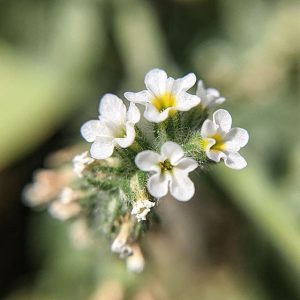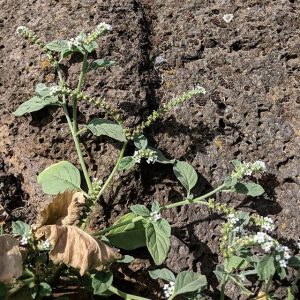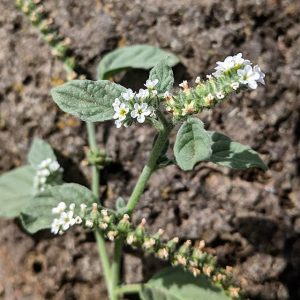Common Heliotrope or Potato Weed (Heliotropium europaeum), an accidental Eurasian import and major annual weed of southern Australia’s grain-growing regions, including the Victorian Mallee.
Initially confused as a pre-contact native species thanks to the messy interpretation of a specimen collected in SA in 1802, it is now broadly understood that Common Heliotrope was a post-contact import, with the early specimen having been one of Australia’s many native species in Heliotropium (of which only 1 or 2 are found in Victoria).
The first digitised record of Common Heliotrope was made in 1853 by von Mueller, on the Murray at Swan Hill in Victoria. A rash of records from South Australia in the 1880s follow, subsequent to which it was again recorded in Victoria, in the Wimmera in 1892. The plant was also occasionally reported on within Victorian newspapers from the 1890s.
Winter-focused grain growing in Australia, which has traditionally left bare earth fields across the summer months, promoted this coloniser of bare soil to prominence in the country’s grain belts. Producing millions of seeds, the next generation of these plants is nominated by every flash of summer rain and, when sustained by sufficient moisture, they grow and seed indeterminately until killed by winter frosts.
Efforts to identify an effective biological control in the 1950s failed, as Common Heliotrope’s annual life cycle challenges specialised insects and fungal rusts to build self-sustaining populations that can impact the weed across multiple generations.
Close observers of Melbourne’s urban conditions will note there is little to distinguish overtrodden urban bare earth from that found rurally; the species was recorded within the metropolitan by 1908, with the first report a plant found near Spencer Street Station. Presumably seeds had arrived with freight or passenger traffic from the state’s north-west?
The photographed plants were found along the Merri Creek trail in Coburg North and Fawkner, flowering in January and March in bare earth locations with good access to moisture from adjacent drainage.
View Original Post on Instagram
Search for information about Heliotropium europaeum in the Flora of Victoria
View information and occurrences of Heliotropium europaeum on the Atlas of Living Australia
